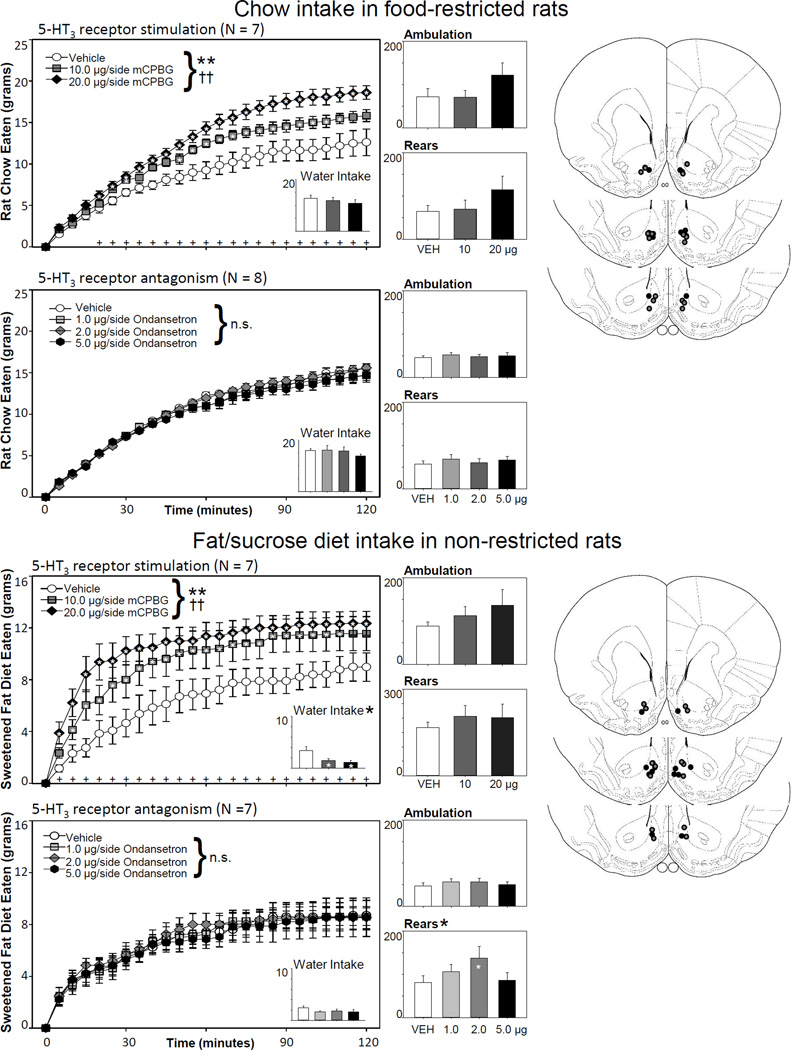Figure 1.
Effects of NAcc stimulation or blockade of the 5-HT3 receptor on feeding, water intake, and locomotion. In food-restricted rats offered rat chow, 5-HT3 receptor stimulation dose-dependently increased food intake; water intake and locomotor measures were not affected. A similar dose-dependent increase in food intake was also observed following mCPBG treatment in non-deprived rats offered a palatable diet. In this case, water intake was significantly reduced, though locomotor measures were unaffected. Antagonism of NAcc 5-HT3 receptors with ondansetron did not impact feeding or water intake in either paradigm, though 2.0 µg/side increased rearing behavior in rats offered the palatable diet. Statistical symbols: *p < .05, **p < .01 for drug effects; single and double crosses demark p < .05 and p < .01 for drug X time interaction effect, respectively. Plus signs along the bottom of feeding graphs indicate times when there were significant simple effects of drug on food intake across drug doses. White stars within the graphs denote significant differences from the vehicle control injection, as assessed by Tukey’s HSD. The histology figures to the right represent the injection sites for each experiment, as charted within Paxinos and Watson [33]. Black-filled circles represent agonist injection sites; gray-filled circles denote antagonist injection sites.

